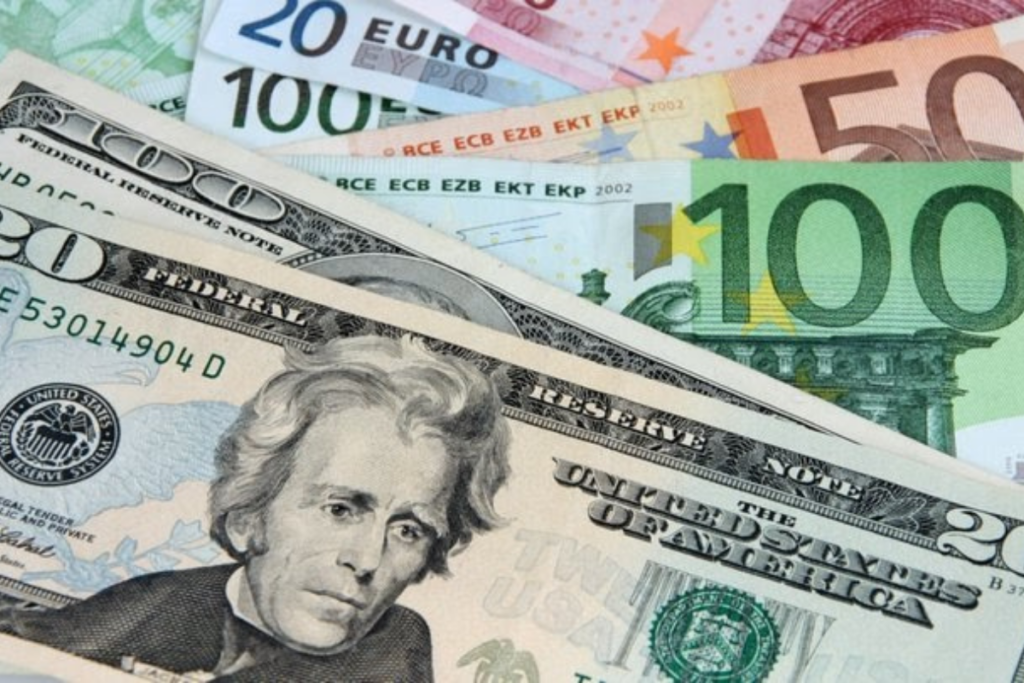
EUR/USD Technical and Fundamental Outlook Amid Key Economic Releases

The EUR/USD pair is currently trading around 1.0830, a critical juncture where the lower limit of the ascending regression channel aligns with the Fibonacci 61.8% retracement of the latest downtrend. This level is further reinforced by the 20-period and 50-period Simple Moving Averages (SMA) on the 4-hour chart. If the pair can break above this level and establish it as support, potential resistances are seen at 1.0900, the mid-point of the ascending channel, and 1.0950, the upper limit of the channel.
On the downside, key support areas include 1.0800-1.0790, a psychological and static level, which also corresponds with the Fibonacci 50% retracement and the 200-day SMA. Below this, further supports lie at 1.0770, which is reinforced by the 100-day SMA and the 200-period SMA on the 4-hour chart, and 1.0750, aligning with the Fibonacci 38.2% retracement.
Following a sharp decline on Wednesday, EUR/USD rebounded and closed in positive territory on Thursday. The pair continues to fluctuate above 1.0800 during the European session as investors await key inflation data.
The US Bureau of Economic Analysis (BEA) recently revised the annualized first-quarter Gross Domestic Product (GDP) growth lower to 1.3% from the initial estimate of 1.6%. This revision led to a correction in the benchmark 10-year US Treasury bond yield, which lost more than 1% on Thursday, diminishing the strength of the US Dollar (USD).
Eurostat is set to publish the preliminary Harmonized Index of Consumer Price (HICP) data for May on Friday. The market expects the core HICP to increase by 2.8% year-over-year. Should the reading fall below expectations, it could exert downward pressure on the Euro with an immediate market reaction.
In the latter part of the day, the BEA will release the Personal Consumption Expenditures (PCE) Price Index for April, the Federal Reserve’s preferred inflation gauge. Market participants will closely watch the monthly core PCE Price Index, forecasted to rise by 0.3%, consistent with March’s increase. A lower reading of 0.2% or below could revive expectations for a Fed rate cut in September, potentially triggering a USD selloff as the weekend approaches. Conversely, if the monthly core PCE rises by 0.4% or more, EUR/USD might face downward pressure, with safe-haven flows likely boosting the USD during the American session.
As the market awaits these pivotal data releases, the EUR/USD pair’s movement will likely be influenced significantly by investor reactions to inflation data from both sides of the Atlantic. The pair’s ability to navigate the key technical levels discussed will provide further insight into its near-term direction amidst the prevailing economic backdrop.
Never miss any important news. Subscribe to our newsletter.
Related News





Is Your Trading Strategy Falling Short? Here’s How to Fix It for Good


EUR/USD Struggles Near 1.0460 as ECB-Fed Policy Divergence Weighs



Australian Dollar Struggles as Strong US Dollar Awaits Key CPI Data

“Indian Rupee Nears Record Low Amid Key Challenges and USD/INR Trends

Never miss any important news. Subscribe to our newsletter.
Editor's Pick

Silver Price Prediction: XAG/USD Drops to Three-Month Low Around $29.50




Is Your Trading Strategy Falling Short? Here’s How to Fix It for Good


